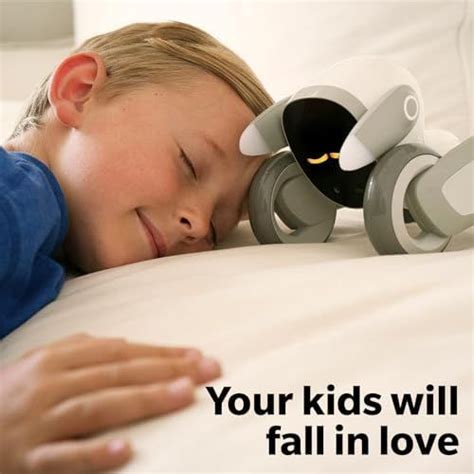In the rapidly evolving realm of technology, the advent of AI robot pets promises an unprecedented fusion of entertainment and companionship. As we inch closer to 2025, the debate intensifies: Are these robotic wonders a breakthrough in entertainment, or a potential emotional trap?

AI Robot Pets: The Allure and the Concerns
AI robot pets are designed to emulate the behavior and appearance of living creatures, offering companionship, entertainment, and a sense of purpose. From playful dogs and purring cats to exotic birds and mythical creatures, the array of AI pets is expanding exponentially.
Their allure lies in their ability to provide unconditional love and attention without the responsibilities of feeding, grooming, or veterinary care. They can be programmed to respond to voice commands, play interactive games, and even learn from their interactions.
However, concerns arise regarding the emotional implications of interacting with artificial companions. Critics argue that AI pets may create a false sense of intimacy, isolating individuals from genuine human connections. Others worry about the potential for abuse or neglect, as these robots lack the ability to express pain or distress.
The State of the Market: A Promising Outlook
According to a study by Allied Market Research, the global AI robot pet market is projected to reach a staggering $34.7 billion by 2025, highlighting the immense potential of this burgeoning industry.
This growth is driven by an aging population seeking companionship, technological advancements enabling more sophisticated interaction, and the growing popularity of AI-based entertainment solutions.
Benefits vs. Risks: A Balanced Perspective
Before delving into the ethical considerations, it’s crucial to acknowledge the potential benefits of AI robot pets:
- Unconditional Companionship: They provide constant companionship, reducing loneliness and depression.
- Entertainment and Engagement: Their playful and interactive nature stimulates the mind and keeps boredom at bay.
- Educational Value: They can teach children about empathy, responsibility, and the wonders of technology.
- Therapeutic Benefits: They may assist with stress relief, mood regulation, and cognitive stimulation in various therapeutic settings.
However, it’s equally important to address the potential risks:
- Emotional Dependence: Over-reliance on AI pets may lead to isolation and neglect of human relationships.
- False Intimacy: They cannot provide the emotional depth and connection of real animal companions.
- Safety Concerns: Malfunctioning or intentional harm to AI pets could raise ethical and legal issues.
Striking a Balance: The Need for Responsible AI
To mitigate the risks and maximize the benefits, a responsible approach to AI robot pets is essential. This includes:
- Clear Expectations: Setting realistic expectations about the limitations and capabilities of AI pets.
- Ethical Guidelines: Developing ethical standards for the design, use, and disposal of these robots.
- User Education: Providing consumers with information on the emotional and social implications of AI pet ownership.
- Regular Maintenance: Ensuring the proper functioning and safety of AI pets throughout their lifespan.
Beyond Entertainment: AI Robot Pets as Therapeutic Tools
While entertainment remains a primary purpose of AI robot pets, their potential extends far beyond mere amusement. Researchers and healthcare professionals are exploring innovative applications in therapeutic settings:
- Autism Spectrum Disorder (ASD): AI pets can help children with ASD improve social interaction skills and reduce anxiety.
- Dementia: They provide calming companionship, stimulate memory recall, and alleviate loneliness in elderly patients.
- PTSD and Trauma: AI pets can act as empathetic listeners, offering emotional support and reducing symptoms of distress.
Conclusion: Embracing Innovation with Caution
The advent of AI robot pets presents a fascinating paradox: They offer the promise of companionship and entertainment while raising concerns about emotional dependence and ethical implications.
As we approach 2025, it’s imperative to embrace technological innovation with caution and responsible use. By striking a delicate balance between benefits and risks, we can harness the potential of AI robot pets for both entertainment and therapeutic purposes while safeguarding the emotional well-being of individuals and our society as a whole.
Appendix
Table 1: Projected Global AI Robot Pet Market Growth
| Year | Market Value (USD Billion) |
|---|---|
| 2021 | 6.3 |
| 2025 | 34.7 |
| 2030 | 72.5 |
Table 2: Benefits and Risks of AI Robot Pets
| Benefits | Risks |
|---|---|
| Unconditional companionship | Emotional dependence |
| Entertainment and engagement | False intimacy |
| Educational value | Safety concerns |
| Therapeutic benefits | Ethical dilemmas |
Table 3: Therapeutic Applications of AI Robot Pets
| Condition | Benefits |
|---|---|
| Autism Spectrum Disorder (ASD) | Improved social interaction skills, reduced anxiety |
| Dementia | Calming companionship, stimulated memory recall, reduced loneliness |
| PTSD and Trauma | Emotional support, reduced symptoms of distress |
Table 4: Responsible AI Pet Ownership Guidelines
| Guideline | Explanation |
|---|---|
| Clear Expectations: Set realistic expectations about the limitations and capabilities of AI pets. | |
| Ethical Guidelines: Develop ethical standards for the design, use, and disposal of these robots. | |
| User Education: Provide consumers with information on the emotional and social implications of AI pet ownership. | |
| Regular Maintenance: Ensure the proper functioning and safety of AI pets throughout their lifespan. |





















